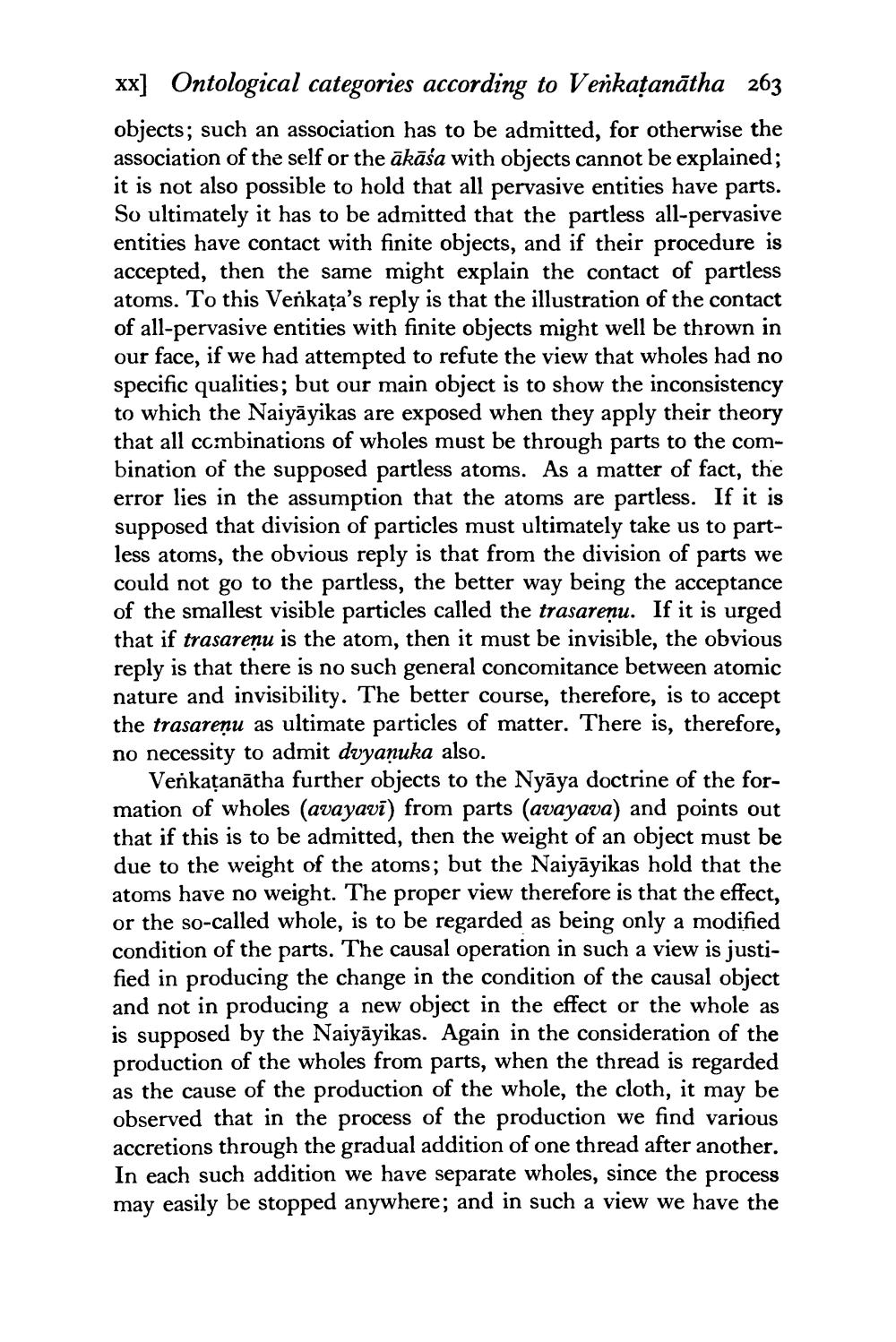________________
xx] Ontological categories according to Verkațanātha 263 objects; such an association has to be admitted, for otherwise the association of the self or the ākāśa with objects cannot be explained; it is not also possible to hold that all pervasive entities have parts. So ultimately it has to be admitted that the partless all-pervasive entities have contact with finite objects, and if their procedure is accepted, then the same might explain the contact of partless atoms. To this Verkața's reply is that the illustration of the contact of all-pervasive entities with finite objects might well be thrown in our face, if we had attempted to refute the view that wholes had no specific qualities; but our main object is to show the inconsistency to which the Naiyāyikas are exposed when they apply their theory that all combinations of wholes must be through parts to the combination of the supposed partless atoms. As a matter of fact, the error lies in the assumption that the atoms are partless. If it is supposed that division of particles must ultimately take us to partless atoms, the obvious reply is that from the division of parts we could not go to the partless, the better way being the acceptance of the smallest visible particles called the trasareņu. If it is urged that if trasarenu is the atom, then it must be invisible, the obvious reply is that there is no such general concomitance between atomic nature and invisibility. The better course, therefore, is to accept the trasareņu as ultimate particles of matter. There is, therefore, no necessity to admit dvyaņuka also.
Venkațanātha further objects to the Nyāya doctrine of the formation of wholes (avayavi) from parts (avayava) and points out that if this is to be admitted, then the weight of an object must be due to the weight of the atoms; but the Naiyāyikas hold that the atoms have no weight. The proper view therefore is that the effect, or the so-called whole, is to be regarded as being only a modified condition of the parts. The causal operation in such a view is justified in producing the change in the condition of the causal object and not in producing a new object in the effect or the whole as is supposed by the Naiyāyikas. Again in the consideration of the production of the wholes from parts, when the thread is regarded as the cause of the production of the whole, the cloth, it may be observed that in the process of the production we find various accretions through the gradual addition of one thread after another. In each such addition we have separate wholes, since the process may easily be stopped anywhere; and in such a view we have the




